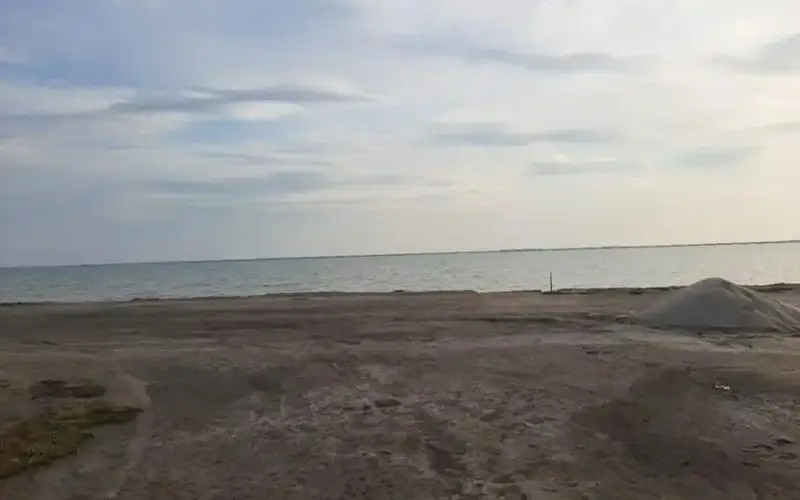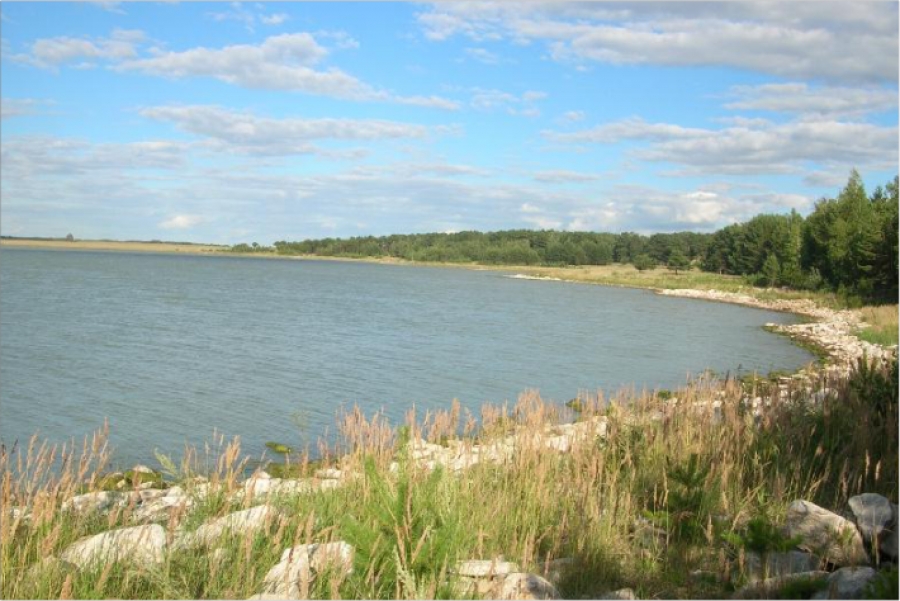ASTANA — In the North Kazakhstan Region, there are two unique bitter-saline lakes: Minkeser and Teke. They are considered “sacred’ by the locals and capture the imagination of the visitors.

Lake Minkeser. Photo credit: Olesya Zhukov/Kazinform Agency. Click to see the map in full size. The map is designed by The Astana Times.
This article, originally published in Kazinfo, explores the lakes and the fascinating legends associated with them.
Minkeser
Lake Minkeser, located in the Mamlyut District, just 85 kilometers from Petropavl, is well-known to nearly every resident. Often called the “Mini Dead Sea” of the region, Minkeser lives up to its name. In 2020, the Scientific Research Institute of Cardiology and Internal Diseases reported that the lake’s therapeutic mud and highly mineralized water have significant health benefits.
Locals have known about the lake’s healing properties for years. Hundreds of people visit every summer to treat joint pain and skin problems. Minkeser is 9.1 kilometers long and 6.1 kilometers wide, with an almost perfect oval shape. On calm days, the lake’s bitter-saline water appears dark blue. A mineralized spring with cold water is located on the shore.
The lake is home to the brine shrimp Artemia salina, which filters the water and releases biologically active substances, giving the water its healing properties. Some Artemia salina eggs die and settle at the bottom, forming the organic component of the therapeutic mud.

Lake Minkeser. Photo credit: Olesya Zhukov/Kazinform Agency.
Legends add to Minkeser’s mystical charm. One legend says that batyrs (warriors) came to the lake to restore their health, as its waters had miraculous powers. Another legend tells of a poor warrior who fell in love with a wealthy girl. Her brothers discovered their secret and killed the batyr, who then turned into a spring. The girl cried by the spring every day, and her tears made the lake salty and gave it healing properties. She eventually turned into a blackbird. If you see a blackbird on your way to the lake, it’s best to turn back, as the water won’t benefit you.
Teke
Lake Teke, the second bitter-saline lake, is located in the Ualikhanov District. This closed basin lake contains up to 300 grams of table salt per liter. Covering an area of 260 square kilometers, it’s larger than Petropavl. The lake is shallow, with an average depth of 0.5 meters and a maximum depth of one meter, varying with the seasons. It is fed by snow and underground waters, with 37 seasonal streams flowing into it.

Lake Teke. Photo credit: qansonar.com
Teke is a gathering place for demoiselle cranes, and in autumn, gray cranes also arrive. Like Minkeser, Teke’s waters are home to Artemia salina, indicating the lake’s ecological purity. Salt deposits periodically form on the shores, where vegetation is almost nonexistent. The banks are steep and rugged, and the islands are small.
The waters and mud of Teke are also considered healing. According to legend, warriors came here to heal their wounds. The lake has been regarded as a sacred site for centuries. Locals respect Teke and refrain from littering or drinking alcohol here.
These two sacred lakes in the North Kazakhstan Region are not only unique natural wonders but also places steeped in legends and mystique, attracting many people with their healing properties and beauty.


